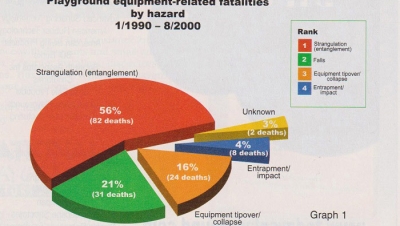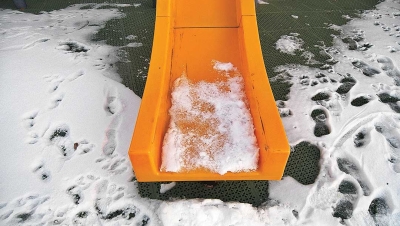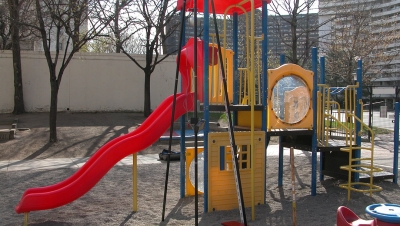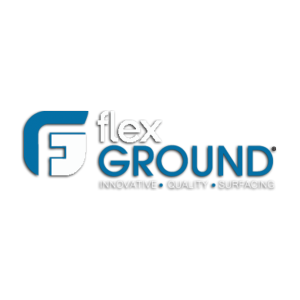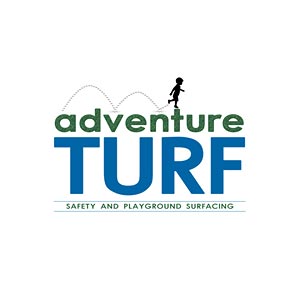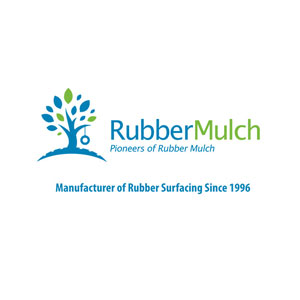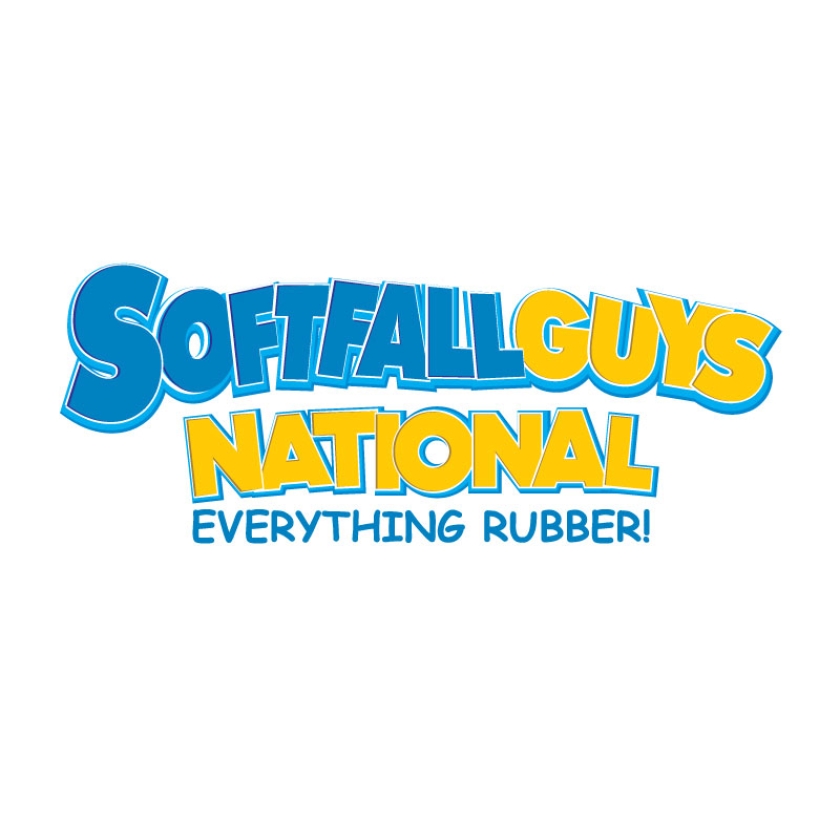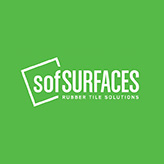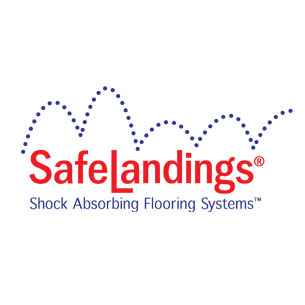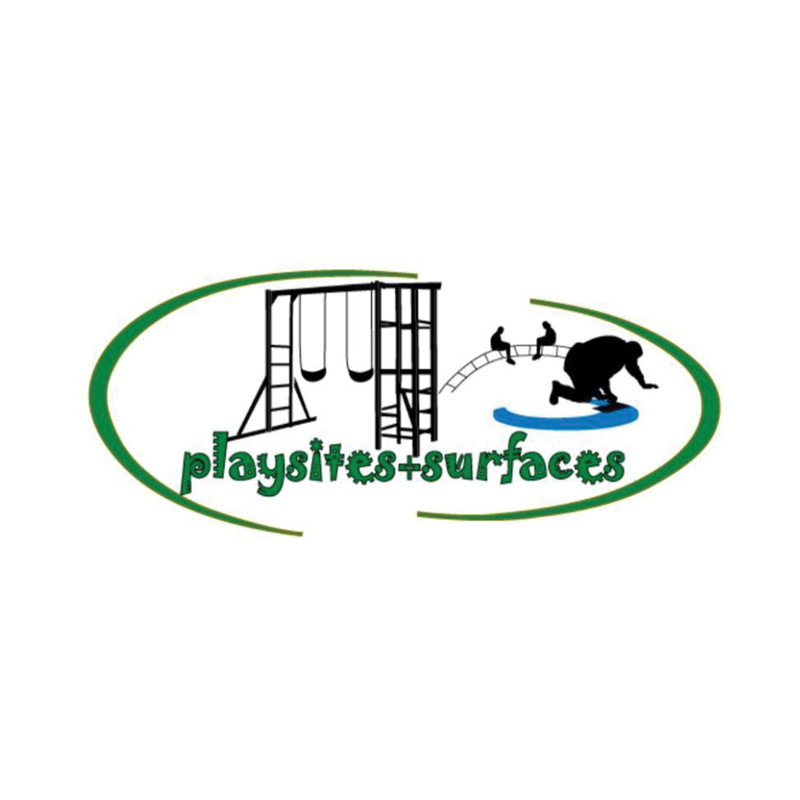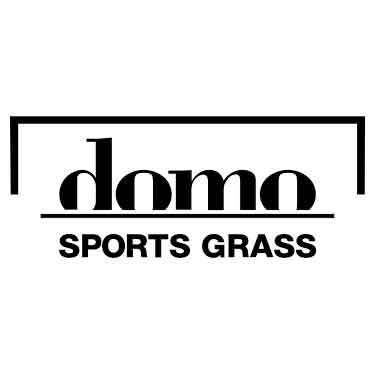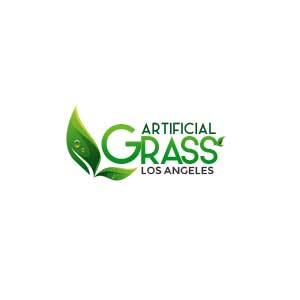At the playground, park, school, and neighborhood playgrounds
The Illinois Park and Recreation Association (IPRA), a 501C3 not-for-profit corporation, on behalf of its 2,400 professional members, submitted a research and development grant proposal to the Illinois State Department of Commerce and Community Affairs. The project was named the IPRA Accessible Playground Surfacing Research and Development Project. The source of funding for this project came from the State of Illinois’ Used Tire Recovery Program which redistributes sales tax surcharge on each passenger tire sold in the state. Several states have similar programs.
IPRA’s grant process began late 2002. Elaine Sherman, Parity, Inc., and Cindy Burkhour, Access Recreation Group, had been providing technical assistance to others who were attempting to develop ADA compliant public playground safety surfacing using Illinois recycled tires. While the results of these efforts had some level of success, the underlying concern with the end result was always the same. These new surface systems all cost too much to be affordable by most public agencies. We knew of existing types of unitary playground safety surface systems and one or two loose-fill surface systems that meet, within limits, the ASTM and ADA requirements for public playgrounds. Our goal was to develop an accessible, resilient, affordable, safe, playground surface system that uses large amounts of recycled tires and would maintain its resiliency when tested at temperatures most likely to occur in average winter conditions in Illinois. We knew there was a public need and market for such a product. In Illinois, we estimated there were over 8,000 playgrounds administered by either public park and recreation agencies (3,700), elementary schools (1,400), and licensed day-care facilities (3,000).
IPRA had the administrative organization with all the support services and facilities necessary to facilitate a grant project of this magnitude, but they did not have the technical experience necessary to carry out this comprehensive research project. Since Elaine Sherman and Cindy Burkhour had previous experience with the Illinois Used Tire Recovery Program it made sense for IPRA to hire them as our principal research investigators to write the grant and implement the project from start to finish.
The next step was to form a Technical Advisory Committee (TAC) to assist the IPRA Corporate Board of Directors and its Executive Director, Bill Wald, who functioned as grant administrator. IPRA assembled a very knowledgeable and experienced group of park and recreation professionals, legal counsels, and risk managers to form the TAC and provide input throughout the entire grant writing and project implementation process, especially with regard to the technical operational aspects of the grant project. This group is comprised of several members from the past and current ASTM F15.29 Sub-committee on Public Playground Safety Standards, the current National Recreation and Park Association’s National Playground Safety Institute, and the Federal Access Board’s original task group charged with developing accessibility guidelines for outdoor recreation facilities. To round out the TAC we added loss control and risk management specialists and attorneys from the Park District Risk Management Agency (PDRMA), an intergovernmental agency that provides comprehensive loss control/risk management services to IPRA and 135 other Illinois Park Districts. The members of the TAC are: Steve Plumb (Elmhurst Park District – now retired), Tom Kalousek (Winnebago Forrest Preserve), Brian Huckstadt (Arlington Heights Park District), Marvin Wolf (Addison Park District – now retired), John McGovern (Northern Suburban Special Recreation Association), Kevin Hoffman (PDRMA Director of Member Services), Ed Dutton and Steve Kleinman (both in-house attorneys for the PDRMA organization specializing in public defense law as it pertains to recreational facilities in Illinois), and myself.
For years these individuals have made substantial contributions to the safety and accessibility of playgrounds that promote the development and well-being of all children.
Finally with the IPRA Project Team in place and after several preliminary meetings with State officials, IPRA Executive Director Bill Wald was ready to submit the grant proposal to the State of Illinois. The proposal had a one-year implementation timeline to complete the initial product and materials research, evaluate various combinations of surfacing systems materials, and install several pilot test sites.
According to the our grant proposal objectives, our project would result in an experimental design for a playground surfacing system that would:
- Improve the accessibility and safety of playgrounds throughout Illinois;
- Enhance the quality of life for ALL children by providing opportunities for inclusive play on all playgrounds;
- Minimize the cost of accessible playground safety surfacing;
- Recycle large amounts of Illinois Passenger Tire Equivalent’s (PTE’s) into an innovative, socially beneficial, environmentally responsible product;
- Comply with ASTM F 1292-99 Standard for Impact Attenuation;
- ASTM F1951-99 Standard for Determination of Accessibility of Surfacing Systems Under and Around Playground Equipment;
- The Americans With Disability Act (ADA) Accessibility Guidelines for Buildings and Facilities, Play Areas Rule; ASTM F1487-01 Standard Consumer Safety Performance Specification for Playground Equipment for Public Use;
- and U. S. Consumer Product Safety Commission, Handbook for Public Playground Safety;
- Have easy installation procedures that assure the integrity, longevity, accessibility and safety characteristics of the system;
Be recyclable again for other uses if and when the surface system is removed.
The Illinois Department of Commerce and Community Affairs acknowledged IPRA had submitted a very interesting and intriguing proposal; however, Mr. Hosey, IL DCCA Grant Administrator, requested we provide a written response to several additional questions so they could continue the application review process. The wanted to know if there had been a literature search on the topic and if so, document the results. They needed to understand more about the research methodology and how the data would be collected and analyzed and to what controls. They wanted to know where we would be buying our recycled rubber. They were curious as to what the expected outcomes were for this research project and they wanted to know if the results of our research would be published in a technical journal.
IPRA asked its principal grant investigators to respond to these questions. A literature review was conducted and very little was found on the subject. Much of the research regarding playground surfacing relates to safety and the resiliency of many products and the importance of proper installation and maintenance. A few articles discussed the importance of surfacing in making playgrounds accessible. One article of interest was on the process to test the accessibility of play area surfaces as conducted by Peter Axelson at Beneficial Designs Inc. Axelson described the technology he developed for use in the field to test the accessibility characteristics of surfacing. We felt that because the ADA Accessibility Design Guidelines for Play Areas just became a final rule, new research will be emerging as those of us in the public recreation arena begin to come into full compliance with the new rules.
Our principal investigators were also aware of a study in process through the U.S. Access Board for the development of stable wood fiber playground surfacing being conducted by the Wisconsin University in Madison. Results were unknown at this time of our research.
Our principal investigators had already identified accessibility issues and performance failures in existing playground surfaces that utilize shredded rubber and this information was used as a basis for our research. There were many unanswered questions from previous attempts at developing a surfacing system using loose-fill rubber from recycled tires, and we wanted to be very thorough in our project analysis. We knew we needed to evaluate the basics like surface resiliency, firmness, and stability issues particularly in high traffic and high impact areas. We knew we would be testing these characteristics using the appropriate testing protocol prescribed by the standard:
Accessibility – for compliance with ASTM F 1951 Standard for Determination of Accessibility of Surface Systems Under and Around Playground Equipment Resiliency – for compliance with ASTM F 1292 Standard Specification for Impact Attenuation of Surface Systems Under and Around Playground Equipment
To complete this part of the grant research we used our surface test plots located outside our IPRA Headquarters in Carol Stream, Ill., and followed the test method procedures and equipment specified in the ASTM F1951 and ASTM F1292 standards.
All test materials were installed in test plots per our proposed field installation procedures, using an occupied human-propelled wheelchair and covering a prescribed distance with four even pushes across the surfacing material within seven seconds. This procedure was repeated five times for each test plot for both (straight and turn tests). The average work meter values for straight propulsion and for turning with the material should be less than the average work per meter for straight and turning on a flat surface with a grade of 7.1% (1:14) of 12.961N straight & 11.986N turning. This test method is difficult to replicate outside of a certified laboratory environment; therefore, the team decided independent third-party professional testing would be required to determine absolute compliance with the ASTM F1951 standard.
To complete the ASTM F1292 impact attenuation or resiliency test procedures we used a laptop computer along with the TRIAX 2000 Surface Impact Tester, surveyors’ rod, carpenters’ level, temperature probe, and hygro-thermometer.
PDRMA purchased the TRIAX 2000 and leased the equipment to IPRA since DCCA grant guidelines did not allow capital equipment purchases. As part of the PDRMA’s purchase they arranged to certify all their loss control staff, the Grant TAC Committee, and our principal investigators in the proper use of the equipment. Even though our principal research investigators are not qualified as a certified independent test laboratory, the results of our field testing gave a thorough evaluation of each test plot and identified those surface systems that were worthy of further analysis later in the grant process by an independent third party testing laboratory.
We knew our evaluation process needed to look at much more than the initial design and installation compliance with the current ASTM resiliency and accessibility requirements. We collectively identified many other problems and concerns. We anticipated expansion and contraction issues related to all products used in these types of surfacing systems but beyond the obvious issues we would consider things such as insect infestation, adjacent bonded seam integrity of the top containment material used in the various system design test plots, extreme hot and cold temperature fluctuation issues related to impacts on both the user and the surfacing system, sub-surface issues and requirements such as drainage and sanitation, and containment issues related to borders of loose surfacing materials.
As the project team moved forward many different top mat materials were contemplated for use in the surfacing system since the covering and stabilization of the loose shredded rubber was critical to the principal objective of the grant proposal (Recycle Illinois Used Tires). As we evaluated each potential surface system solution for its application in real world situations we realized there were many other concerns that needed to be thoroughly investigated. Other issues were identified and addressed such as:
- Evaluate the integrity of the connections and transitions to other adjacent surfaces as it relates to installation and maintenance procedures.
- Determine best materials and procedures for the loose rubber containment border.
- Investigate materials that will maintain their integrity and not leach any harmful chemicals into the environment.
- Investigate materials and construction methods for a firm, stable base that will allow water drainage under the shredded rubber layer.
- Construct numerous 6’x 8’ test plots to test a variety of rubber shred sizes and depths and a variety of top mats in various combinations to determine the material combinations that will produce the greatest accessibility and safety for the least overall cost.
- Test a variety of installation and compaction processes for a variety of shred sizes and depths of rubber that will produce the most firm, stable and resilient shredded rubber layer to determine the best installation process.
- Determine the best installation procedures that will maximize product performance and reduce time requirements for installation and maintenance.
- Check OSHA requirements applicable to working with all supplies and materials contemplated for use by installers such as shredded rubber, PVC, and adhesives.
- Test a variety of adhesives and bonding agents to determine the best methods to secure the top containment mats to each other and to the perimeter containment border including connections with other types of surface materials commonly used to construct accessible routes like concrete or asphalt.
- Identify and record all installation requirements for bonding agents such as surface preparation, ambient temperature requirements, curing time, and the effectiveness and strength of the joint adhesion.
- Monitor and record the effects of temperature fluctuations on the surfacing system and modify as necessary the perimeter connection process to allow for any expansion and contraction of surfacing top mat layer.
- Conduct accessibility and resiliency evaluations on the test plots using the ASTM Surfacing Standards F1292-99 test methods to test for compliance for resiliency and accessibility and record test data over a period of time to see the impact of extreme climate conditions.
- Develop training materials for the installation process, which may include written and video instructions.
- Develop maintenance and repair techniques with appropriate written instructions.
- Develop maintenance and repair techniques for surfacing with appropriate written instructions.
- Identify several test sites at park districts for product installations.
- Identify a variety of sites with different play components such as swing bays, freestanding ground level components, small composite structures, larger composite structures with multiple high impact exit points, wheelchair accessible structures accessed by ramp, accessible structures accessed by transfer, etc.
- Identify sites with different soil conditions, topography, water table levels, etc. to better evaluate environmental impacts.
- Install surfacing at several test playground locations.
- Develop a checklist for monitoring and documenting ongoing evaluation of surface system’s performance over time.
- Analyze the system’s component costs and determine the overall product cost assuming bulk material purchasing including transportation carriers and costs.
- Ultimately develop a group cooperative buying and distribution process.
The initial findings of our principal grant investigators resulted in fine-tuning the design criteria of the most promising surfacing system designs. Further research and evaluation was conducted on the materials and supplies used in each of the most promising systems. This analysis included the pricing, installation cost estimates, and long-term effectiveness of each of the surface system designs. The TAC reviewed this progress and provided valuable technical and operational input along each and every step of the process.
The biggest challenge of the entire project was to find a top mat containment surface suitable for the public playground environment that would meet our research objectives, remain affordable to the public playground marketplace, would be easy to install and maintain, and still comply with all our technical requirements. The principal research investigators systematically evaluated each material and eventually eliminated all top wear surface materials not suitable for further investigation. Once the most viable surfacing systems and their components were identified, the Team selected the most promising surfacing system for the final stage of the research project, the installation of five test sites for further evaluation of installation procedures, cost analysis, and ultimately durability and maintenance issues.
This was conducted on TAC member park district playgrounds. Members of the committee were offered a test plot on one of their current or proposed playgrounds. Since the IPRA and all TAC member agencies were members of the Park District Risk Management Agency (PDRMA), it was easy for everyone to address the liability issues related to installing an experimental surfacing system without having a manufacturer’s product liability insurance policy to cover any future losses related to the surfacing system. PDRMA and everyone involved in the research project believed the proposed system was far superior in impact attenuation and accessibility than most everything else PDRMA’s member districts were currently using on their playgrounds; therefore, getting approval to commence the final phase of the research was not a problem.
The primary investigators began to identify all the issues they intended to address upon completion of the test site installations. Over a period of time during this pilot test site installation process, we will be evaluating the integrity of the surface system characteristics and the construction methods used during the installation process such as:
- Flammability
- Surface temperatures
- Durability of mat seams and seaming adhesives
- Compaction at key impact points such as slide ends and under swings
- Connections between playground surface and a variety of accessible route surfaces such as concrete and asphalt
- Connections between perimeter containment materials and accessible top mats
- Surface containment mat expansion and contraction with temperature fluctuations
- Surface containment mat wear in heavy traffic areas
- Impact of long-time exposure to the elements such as sun and freeze/thaw cycles on the accessibility and resiliency characteristics of the surface system
- Installation equipment required for system installation including;
- Hand tools such as rakes, shovels, wheelbarrows, saws, levels, knives and other cutting tools, etc.
- Heavy equipment for material moving such as various endloaders, dump trucks
- Power equipment such as compactors, rollers, saws, drills, generators, etc.
The IPRA would like to thank Mr. Dean Bair, Manager Resource Development, Illinois Department of Commerce and Community Affairs, Bureau of Energy and Recycling, Used Tire Recovery Program, the State of Illinois for partnering with us on this innovative research project where the >citizens of Illinois all win by recycling used tires, providing accessible, safe, and affordable playground safety surfacing for public playgrounds, and publishing research that can be utilized by others to replicate this and future used tire recovery programs to benefit all our children.
IPRA encourages public support of parks and recreation and engages in awareness campaigns about the benefits that parks and recreation provides to communities, individuals, the environment and the economy and encourages environmental protection. This project is a prime example of what our membership is capable of doing when we work together to support one another to advance an idea or cause that is beneficial to all concerned.
A special thanks to the following IPRA members who served as advisory consultants (TAC) to the project, and to their agencies and staff members who also participated in so many ways to help successfully complete this project:
- Steve Plumb, Elmhurst Park District
- Tom Kalousek, Winnabego County Forest Preserve
- Marvin Wolfe, Addison Park District
- Brian Huckstadt, Arlington Heights Park District
- John McGovern, Northern Suburban Special Recreation Association
- Kevin Hoffman, Park District Risk Management Association
- Steve Kleinmann, Park District Risk Management Association
- Ed Dutton, Park District Risk Management Agency
- Ken Kutska, Wheaton Park District
Quantities and sources of used or waste tires or tire-derived materials to be utilized in the project:
An estimated 10,000 Illinois PTE’s will be used in 10,000 sq./ft. of test site surfacing (based on the formula 1 PTE covers at a 6 inch depth, 1 square foot area which complies with impact attenuation requirements for playground surfacing).
Projected Illinois markets for end product:
3,607 playgrounds in Illinois offered by park districts, forest preserves, conservation districts, and municipal recreation departments.
1,238 public elementary schools
2,927 licensed childcare centers (all required to have playgrounds)
7,772 potential sites X 5,000 sq. ft. (estimated average size of playgrounds)
= 38,860,000 sq. ft. of accessible safety surfacing required
Projected PTE’s = 38,860,000
NOTE** This is an extremely conservative estimate and only projects one playground per school and this does not include the countless commercial playgrounds (fast food restaurants, campgrounds, Y’s, summer camps, private schools).
LITERATURE REVIEW RESULTS:
Yes, a literature review was conducted and we found very little. Much of the research regarding playground surfacing relates to safety and the resiliency of many products and the importance of proper installation and maintenance. We found a few articles that discuss the importance of surfacing in making playgrounds accessible. We found one article on the process to test the accessibility of play area surfaces done by Peter Axelson at Beneficial Designs, which describes the technology he has developed to use in the field to test the accessibility characteristics of surfacing (see attached, this is the equipment we plan to use for our field testing). We feel that because the ADA Accessibility Design Guidelines for Play Areas just became a final rule, new research will be emerging as those of us in recreation begin to come into full compliance with the new rules.
We are also aware of a study in process through the U.S. Access Board for the development of stable wood fiber playground surfacing being conducted by the Wisconsin University at Madison. Results are pending.
EXPLICIT DETAIL OF PROPOSED RESEARCH INCLUDING METHODS, PROCEDURES, EQUIPMENT TO BE USED, AND DATA TO BE COLLECTED:
- Identify accessibility issues and performance failures in existing playground surfaces that utilize shredded rubber. Evaluate surface resiliency, firmness and stability particularly in high traffic and high impact areas, expansion/contraction, insect infestation, seam integrity, surface temperatures, sub-surface and containment border integrity, connections and transitions to other surfaces, installation procedures, maintenance procedures/records.
- Identify potential top mat surfaces for testing. Investigate potential mat products currently being manufactured that could possibly be used to stabilize and cover loose shredded rubber.
- Determine best materials for retaining border. Investigate materials that will maintain integrity and not leach any harmful chemicals into the environment.
- Determine best materials for a base under the shredded rubber layer. Investigate materials and construction methods for a firm, stable base that will allow water drainage for the surface system.
- Construct numerous six-by eightfoot test plots. Test a variety of shred sizes and depths and a variety of top mats in various combinations to determine the material combinations that will produce the greatest accessibility, safety and for the least overall cost.
- Determine the best installation and compacting process for shredded rubber. Test a variety of installation and compaction processes for a variety of shred sizes and depths of rubber that will produce the most firm, stable and resilient under-surfacing layer. Technique examples to be investigated may include blowing in tire chips, the use of a vibrating plate compactor or the use of pre-bagged rubber with the use of resilient partitions to provide stability and limit displacement of loose rubber. Check OSHA requirements applicable to work with shredded rubber, PVC, glue and adhesives.
- Determine the best adhesives. Test a variety of adhesives and bonding agents to secure mats to each other, to perimeter containment border and to connections with other surfaces such as accessible route materials like concrete or asphalt. Record installation requirements, such as surface preparation, ambient temperature requirements, curing time and the effectiveness and strength of the joint adhesion.
- Monitor and record the effects of temperature fluctuations on the surfacing and then develop perimeter connections to allow for any expansion and contraction of surfacing top mat layer.
- Conduct accessibility and resiliency evaluations on the test plots using the ASTM Surfacing Standards test methods to test for compliance for resiliency and accessibility and record test data over time.
- Determine the best installation procedures that will maximize product performance and reduce time requirements for installation and maintenance. Document instructions and develop training materials for the installation process, which may include written and video instructions. Develop maintenance and repair techniques for surfacing with appropriate written or video instructions.
- Identify several test sites at park districts for product installations. Identify a variety of sites with different play components such as swing bays, freestanding ground-level components, small composite structures, larger composite structures with multiple high-impact exit points, wheelchair-accessible structures accessed by ramp, accessible structures accessed by transfer, etc. We will be looking for sites with different soil conditions, topography, water levels, etc. to test the environmental impacts of weather, moisture, etc. Install surfacing at a variety of test playground locations and develop a checklist for monitoring and documenting ongoing evaluation of product’s performance.
- Determine the overall product cost, investigate bulk material purchasing, transportation carriers and costs. Develop a group buying and distribution process for IPRA.
EQUIPMENT AND SPECIFIC TESTING AND EVALUATION:
We will be testing for the following characteristics using the appropriate testing protocol prescribed by the standard:
- Accessibility – for compliance with ASTM F 1951 Standard for Determination of Accessibility of Surface Systems Under and Around Playground Equipment
- Resiliency – for compliance with ASTM F 1292 Standard Specification for Impact Attenuation of Surface Systems Under and Around Playground Equipment
We will also be evaluating, over time, the integrity of the surface characteristics and the construction methods. We will be evaluating the following:
- Flammability
- Surface temperatures
- Mat seams and seaming adhesives
- Compaction at key impact points such as slide ends and under swings
- Connections between playground surface and a variety of accessible route surfaces such as concrete and asphalt
- Surface mat expansion and contraction with temperature fluctuations
- Surface mat wearing in heavy traffic areas
- Impact of long-time exposure to the elements such as sun and freeze/thaw cycles on the accessibility and resiliency characteristics of the surface system
- Connections between perimeter containment materials and accessible top mats
INSTALLATION EQUIPMENT TO BE USED FROM PARK DISTRICTS:
- Hand and power tools such as rakes, shovels, wheelbarrows, saws, levels, etc.
- Heavy equipment for material moving such as bobcats, dump trucks, compactors, rollers, etc.
ACCESSIBILITY TEST EQUIPMENT TO BE USED (OR EQUIVALENT):
- surface test plots
- strain gage reaction torque sensor
- temperature probe
- digital protractor
- wheelchair
- digital humidiguide
- tape measure
- 4’ level
- 8” x 8” tamper
- rider weight 175.5 lbs and total weight of rider and chair combined 208.6 lbs.
ACCESSIBILITY TEST PROCEDURE:
Test materials installed in test plots then tested rolling wheelchair with 4 even pushes across material within 7 seconds. This procedure will be repeated 5 times for each test (straight and turn tests). The average work meter values for straight propulsion and for turning with material should be less than the average work per meter for straight and turning on a flat surface with a grade of 7.1% (1:14) of 12.961N straight & 11.986N turning
RESILIENCY TEST EQUIPMENT:
- laptop computer
- accelerometer
- impact tower guided wire
- ANSI head form
- temperature probe
- hygro-thermometer
RESILIENCY TEST PROCEDURES:
ASTM F 1292-99, using an average of the last two of three drops, no value shall exceed 200G-Max or 1000HIC in determination of maximum critical fall height.
RESULTS PUBLICATION:
We do not anticipate publication in a technical journal. We are using materials that are already on the market for other uses and will be combining them and developing an installation process to create a new use, not creating new materials. However, we do anticipate wide distribution of our research process and findings through presentations, training, articles, and consultation. We intend to distribute information though the Illinois Parks and Recreation Association, National Recreation and Park Association,Illinois Department of Natural Resources, National Center on Accessibility, Illinois Department of Education and many advocacy organizations representing children with disabilities that will benefit from accessible, safe, affordable playground surfacing. As a result of disseminating this information we anticipate widespread use of this new product utilizing huge quantities of Illinois used tires to create accessible, safe playgrounds for ALL children that will be beneficial to the community and the environment.
RUBBER CHIP VENDORS:
We will be evaluating a variety of shred sizes and transport requirements and determining which Illinois vendors can produce the shred sizes and volume required. We have the following list of vendors received from you to work from, but would appreciate any additional information you could provide about other vendors.
New Heights Recovery & Power L.L.C.
1705 Cottage Grove Avenue
Ford Heights, IL 60411
708-757-4826
Lakin General Corporation
2044 N. Dominick Street
Chicago, IL 60614
773-871-6360
Tire Grinders Transporters, Inc.
491 NE Industrial Drive
Aurora, IL 60504
630-844-2547
Tire Shredders Unlimited
1822 N. Lincoln Parkway
Lincoln, IL 62656
217-735-5386
RDF, Inc.
2909 Richardson Street
Eldorado, IL 62930
618-273-4141


